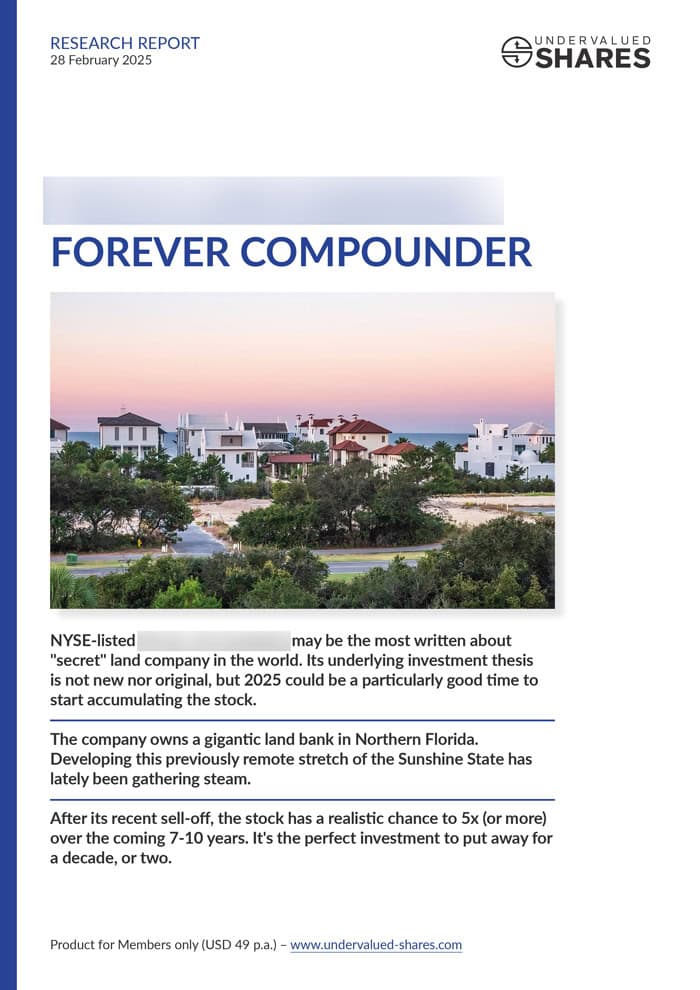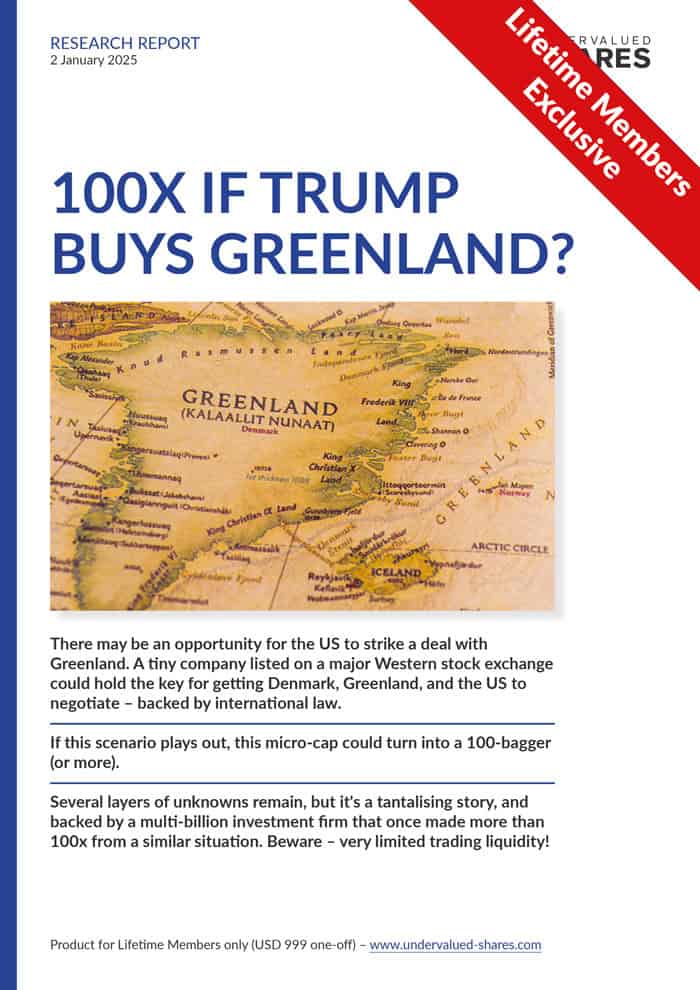The government of the world-famous Galapagos Islands has banned the importation of additional electric cars. So says a decree issued on 11 February.
This isn’t something you will have heard from the mainstream media. But it’s of interest to anyone who is considering to invest into automobile companies, whether that’s Tesla, Volkswagen, or any of the other large auto producers in the world.
Charles Darwin used the Galapagos Islands as inspiration for his theory of evolution. I am now going to use the same islands (which I called home between 2011 and 2015) to explain to you why at least some of the world’s automobile companies are currently a steal for investors.
The Galapagos Islands make for useful case studies
The saying goes that Galapagos is a microcosm of the world.
Anything that happens in the world on a grander scale can be found, measured, observed and studied on these islands. The islands and their 30,000 residents are a fairly compact ecosystem and society, which makes it so easy to examine changes.
Well, someone might want to spend some time studying the miscalculations, negligence and ignorance that is the base of some of the electric vehicle hype currently gripping the entire world. Since 11 February, the Galapagos Islands provide everything that you’d possibly need for a thorough case study.
The rest of the world is all gaga over the idea to end the fossil fuel-powered “Internal Combustion Engine” and keep only electric vehicles on the road. However, the islands that would (assumingly) be crying out loud for an electric vehicle fleet have now decided to ban the import of any additional electric cars until further notice.
How is all this even possible, and what does it mean for shareholders of car producing companies?
Boom, enthusiasm & PR photos – then bust!
Electric vehicles were welcomed to the Galapagos Islands with open arms in 2016.
Back then, the island’s provincial government hosted events to present newly available electric car models to the population. You can still find some of the surrounding media reporting on the web. This was a widely celebrated development!
Crucially, the government committed to waving the strict limitations that up until this point had been in force for anyone wanting to import a car to the UNESCO World Heritage protected islands.
To limit traffic on the ecologically fragile islands, anyone who wanted to import a car had to prove a genuine need and jump through countless bureaucratic hoops. Not so for electric vehicles. The 2016 decree made it possible for anyone to freely import an electric car. The only condition was for the buyer to have a family. However, since most single people have family members who are married, every local knew that this rule could easily be circumvented. The doors were swung wide open for importing electric vehicles.
Much virtue-signalling and PR ensued. The Galapagos – green, electric, sustainable!
Only, no one even did just the basic math, and the entire effort was also intellectually dishonest right from the start.
Here is why:
1: Fossil fuel-based power generation
The vast majority of the energy produced in the Galapagos Islands is generated through burning diesel fuel in generators.
There have been some efforts to introduce other forms of energy generation. It’d be worthy of a separate Ph.D. thesis to what degree these delivered, and to what degree they failed. It’s a very mixed bag. That aside, about 85% of the islands’ energy is currently generated through burning diesel (figures vary depending on which source you use – but this is a reasonable estimate).
If you charge an electric vehicle from a grid that is powered by burning diesel fuel to generate electricity, what does that leave you with?
A diesel-powered car, of course!
It all looks good on the surface, provided you turn a blind eye to the fact that the burning of fossil fuel is simply shifted from the car (visible) to diesel generators (mostly outside of the public eye). But besides the outward appearance, it’s still a car that runs primarily on fossil fuels.
2: Lack of electricity generation capacity
The islands’ electricity grid had suffered regular outages even before the importation of a large number of electric cars. A fast-growing economy combined with under-investment in public power generation never makes for a good combo.
Guess what happened once all these additional vehicles were hooked to an already strained grid?
During my recent two-week stay in the islands, power outages were a regular occurrence.
It’s basic logic but in amidst the enthusiasm about going “green” and “sustainable”, such details are quickly forgotten. If you want to run electric vehicles, you better make sure to have sufficient electricity for charging them.
Notably, the government decree stated that it needs to ban further importation of electric cars “to protect the stability of the electricity network.”
Honi soy qui mal y pense.
3: Other intellectual insults as a bonus
The green movement never forgoes an opportunity for public virtue-signalling and for pushing their special interests in wilful mainstream media.
What often goes un-reported are the inconsistencies that render their policies either less effective than generally thought, or even harmful.
E.g., waiving the need for a permit to import an electric car only led to LOTS of people buying a car. People who otherwise would not have had a car switched from using public transport or bikes to having their own vehicle.
This collides with other eco-goals, such as wanting to reduce the overall density of car ownership on these unique, fragile islands. Road kill of tame birds on the streets of the islands is a major problem. Adding yet more traffic isn’t going to help this situation.
Electric car good, fossil fuel car bad! Right?
Reality has now caught up with the Galapagos Islands, and this is something for automobile company investors to take note of.
Right now, both stock market circles and the mainstream media believe that existing automobile manufacturers have largely missed the trend for electric cars. There is a fear that this leaves them at risk of going out of business altogether. Tesla and others will turn them into roadkill, or so they say. E.g., the Stanford University economist and popular book author, Tony Seba, predicted that by 2030, companies like Volkswagen and also Shell will be out of business.
Non-stop mainstream media reporting does have an effect on stock market valuations. This entire narrative has contributed to:
- Tesla and similar companies trading at sky-high valuations.
- German car manufacturers trading at their lowest valuation since the 2008 financial crisis (p/e’s of 5).
A narrative pushed by special interest lobbies can be powerful. However, the truth, logic, and basic math all have a nasty habit of eventually catching up.
Might the future turn out to be quite a bit different than what the augurs of the electric car age are currently predicting?
In my recent research report on Volkswagen, I've spelled out my own view of electric vehicles:
- There is a need and a use for electric vehicles, e.g., relatively clean transport in big cities where distances are mostly relatively short and where air pollution is an issue. Car makers do need to have such an option available as part of their product mix. Though for now, these vehicles simply remain too expensive to see mass adoption.
- For many other uses, vehicles with Internal Combustion Engines will remain the preferred and viable option for many years to come - well into the 2030s, and for parts of the world quite probably beyond that. Also, it remains to be seen whether electric vehicles will ever become truly viable. They may end up being replaced by cars with hydrogen engines – a bit like Betamax was replaced by VHS, which left early adopters with worthless pieces of kit.
- Germany - a country that likes to see itself at the forefront of switching to so-called “green” energy - is going to face a day of brutal reckoning. As of today, it is on course to failing four of its five goals for 2020. The country’s entire energy planning is bound to turn out a pipedream. Today, the country produces 55% of its power by burning coal, which is why “electric” vehicles operated in Germany are effectively coal-powered cars.
Coincidentally, Germany’s President, Frank Walter Steinmeier, visited the Galapagos on 15 February, just four days after the electric vehicle import ban came into place. The press corps travelling with him should have used the visit to inform their compatriots what happens when you have lots of electric vehicles but not enough power to run them (never mind the issue where the power comes from) – but clearly they haven't.
Temporary insanity is your opportunity to invest at low prices
Whether all this is widely reported or not, the Galapagos just learned a lesson that other places will also have to learn. Most countries’ national grids couldn’t sustain a mass switch to electric cars anytime soon, even if all other factors were not an issue anymore. Germany wants to switch off its nuclear power plants, stop using coal, and make sure nothing but rose petal smell comes out of the exhaust pipes of cars. It’s a nice idea but it’s not going to work; at least not for another decade (or two, or three).
Seeing what just went down in the Galapagos Islands is why I am so confident that sooner or later, a degree of sanity will return to the analysis of the car industry’s prospects, and how stocks of car manufacturers are valued.
The electric car hype will gradually be replaced by a sense of realism. Timing is, as always, quite difficult. But the day of reckoning will come. Just like in the Galapagos Islands, where the reality check led to the 11 February decree!
All of which bodes well for investing in the companies that are currently valued at 2008-style lows when basing a valuation on a comparison of their earnings and their market capitalisation.
The only remaining question is, would you like to take advantage of this situation?
If you do, reading my report on Volkswagen is a step I heartily recommend you take sooner rather than later. The share price has notched up a bit since I first reported about it, but it’s still time to get in at bargain prices.
Did you find this article useful and enjoyable? If you want to read my next articles right when they come out, please sign up to my email list.
Share this post:
Want to receive my next research report on the day it is released?
Become a Member (just $49 a year!) and unlock:
- 10 extensive research reports per year
- Updates on previous research reports
- 2 special publications per year
P.S.: I just released my latest in-depth report about what I consider to be the best equity opportunity in Germany - Porsche SE! Available for Members only so sign up now to get immediate access.








